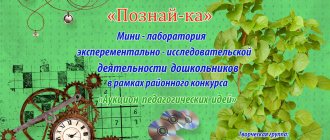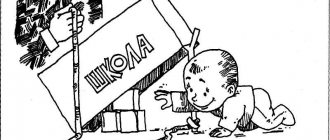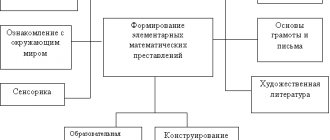Interdisciplinary extracurricular activities
In modern schools, more and more attention is paid to interdisciplinary connections. It is the understanding of such connections that creates the basis for the formation of competencies and readiness to apply knowledge in specific situations.
It can be difficult to trace and understand interdisciplinary parallels in detail within a lesson, and this is where extracurricular work comes to the rescue. There are several options for constructing an outline plan for an extracurricular activity on an interdisciplinary basis.
- Conducting extracurricular activities related to different disciplines, taking into account common educational objectives, for example, environmental or patriotic.
- Integration of extracurricular activities in different subjects with the participation of several teachers. This could be a theatrical production, in the organization of which teachers of literature, history, and music are involved.
- Application of knowledge acquired in one subject when conducting an extracurricular activity thematically related to another discipline.
Sports and recreational area of extracurricular activities
The problem of the level of physical fitness and health status of schoolchildren today is quite acute. Insufficient activity, bad habits, lack of healthy lifestyle skills. Physical education lessons may not be enough here. It is extracurricular work in this direction that allows us to develop an interest in sports and create a culture of preserving and promoting health.
Drawing up plans for extracurricular activities in physical education is an important area of work for teachers of this discipline. Activities can be held in one of the following forms:
Extracurricular activities and Federal State Educational Standards
In accordance with the new educational standards, the familiar concept of “extracurricular activities” not only received a new name “extracurricular”, but also significantly changed its content. Now this is an obligatory component of the educational process, the task of which is the diversified development of the student, identifying his abilities and inclinations. All schoolchildren are involved in this work, independently choosing a topic based on their interests. The standards define several main areas:
- spiritual and moral,
- cognitive (intellectual),
- general cultural,
- sports,
- social.
You might be interested in: What is a core? Extraction and research of samples
You may be interested in:British monarchy: history, features
The forms of conducting classes in these areas are so diverse that the outline of an extracurricular activity often resembles a full-fledged scenario. The following options have become traditional: thematic classes, projects, excursions, meetings of research societies and thematic circles, socially significant events, forums, round tables, theatrical performances and many others.
Outline of extracurricular activities: topics
You may be interested in:Which pyramid is called correct: detailed answer and examples
The new standards place special emphasis on the need to form universal learning activities for students. This explains the peculiarity of organizing extracurricular activities, which are primarily aimed at ensuring that the child learns to think, make decisions, and act. The problems of such classes are very broad, and the topic of the outline of an extracurricular activity largely depends on the chosen direction of work and program.
Thus, the topics of events in the social and spiritual-moral areas of extracurricular activities can be related to the creation of a family archive, family tree, volunteer work, social tests, viewing and discussion of films with patriotic content, etc. Game and theatrical forms are also of great importance here acquaintance with art and literature.
Classes within the intellectual direction are usually associated with in-depth study of school disciplines or are based on an interdisciplinary basis, helping children to see the interconnection of processes and phenomena.
Sports and recreational areas can be thematically dedicated to memorable dates and holidays.
Extracurricular activities for younger students
When preparing a plan for an extracurricular activity in primary school, in addition to the provisions of the Federal State Educational Standard and the interests of students, it is necessary to take into account the requirements of SanPiN and the psycho-physiological characteristics of children of this age.
Younger schoolchildren are characterized by rapid fatigue, reluctance to long-term static loads, and difficulties in switching from one type of work to another. Therefore, when developing a plan for an extracurricular activity, you should include more play activities, walks or excursions, and also take into account the peculiarities of children’s visual and figurative thinking.
The educational organization independently chooses the time frame and directions of extracurricular activities, taking into account the interests of children, the wishes of parents, material, technical and personnel capabilities. The maximum permissible weekly workload is 10 hours. Often such events are organized in after-school groups. And if we are talking about a combination of training sessions and developmental activities, then before self-preparation you should organize outdoor games, walks, socially useful events, and after it - spectacular and emotional events (quizzes, games, concerts, presentations).
Basic school: features of extracurricular activities
If in the course of organizing extracurricular work with primary schoolchildren the main task is to reveal abilities, general cognitive and creative development, adaptation, then in the main school the emphasis shifts. The formation of universal educational activities remains on the list of priorities, but adolescent socialization and self-realization also come to the fore. Therefore, while maintaining the general structure, the outline of an extracurricular activity in the 8th grade will differ significantly from a similar development for elementary school, even if the direction of work is the same.
This is especially true for the choice of forms of work for students and the principles of their interaction. Preference here will be given to group and team work. For example, when developing a plan for a 7th grade extracurricular event on issues of etiquette and behavior in society, it is advisable to use the principle of dividing into teams and selecting a jury as the main technique.
You may be interested in: Integration of additional education and general education: types, mechanism, conditions
The moment of competition and the need to work in a group for a common result successfully influence the formation of communication and social skills. For competition tasks, it is better to select descriptions of real situations and oddities, and use game elements.


